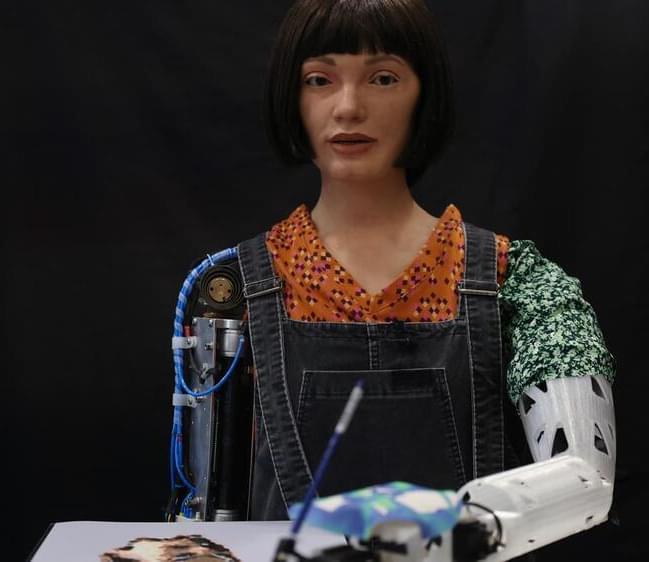Splashdown off the Baja Coast near Guadalupe Island targeted for 11:39 a.m. CST (12:39 p.m. EST) on Sunday, Dec. 11Thanks for watching — why not support this…
Get the latest international news and world events from around the world.

Aging is driven by unbalanced genes, finds AI analysis of multiple species
Northwestern University researchers have discovered a previously unknown mechanism that drives aging.
In a new study, researchers used artificial intelligence to analyze data from a wide variety of tissues, collected from humans, mice, rats and killifish. They discovered that the length of genes can explain most molecular-level changes that occur during aging.
All cells must balance the activity of long and short genes. The researchers found that longer genes are linked to longer lifespans, and shorter genes are linked to shorter lifespans. They also found that aging genes change their activity according to length. More specifically, aging is accompanied by a shift in activity toward short genes. This causes the gene activity in cells to become unbalanced.



Sam Bankman-Fried probed over Terra-LUNA crash: report
Federal prosecutors are reportedly investigating Sam Bankman-Fried, the founder of bankrupt cryptocurrency exchange FTX.com, for possible market manipulation that led to the Terra-LUNA crash in May, according to the New York Times.
See related article: Could FTX woes bring on another crypto freeze resembling Terra-Luna?

Watch NASA’s Artemis 1 splashdown here, starting at 11AM ET
After 25 days in space, is about to conclude its uncrewed test run to the Moon. The mission will draw to a close when the spacecraft splashes down in the Pacific Ocean close to Guadalupe Island, which is 130 nautical miles off the coast of Baja California. Orion is scheduled to hit the water at around 12:40PM ET. NASA’s livestream will start at 11AM and continue after splashdown as a recovery team picks up the capsule. You’ll be able to watch the stream below.
NASA the landing trajectory and splashdown site so as not to pose a threat to people, land or shipping lanes. Just before re-entry, Orion and the European Service Module will separate, with the latter burning up in Earth’s atmosphere.
The crew mobile will carry out a skip entry technique to ensure it accurately arrives at the designated landing site. Orion will edge into the upper part of the atmosphere, then use that and its own lift to “skip” back out before re-entering for the final descent. The atmosphere will reduce Orion’s speed to 325MPH and the 11 parachutes will eventually slow it to a splashdown speed of 20MPH or less.


Scientists find ‘unusual, intense blast of energy’ from nearby galaxy
A massive blast of light considered extremely rare and is believed to have been triggered by the collision of stars with a black hole that hit the Earth recently and which could help change our understanding of the universe, scientists revealed.
The event called a gamma-ray burst (GRB), which lasted for only 50 seconds, came from a nearby galaxy in December 2021. These blasts are considered to be the most powerful explosions in the universe.
Earlier, it was believed that GRBs only resulted from the destruction of massive stars, but astronomers now believe that it can come from the combination of two neutron stars.
Bacteria From An Olympic Weightlifter Improves Muscle Mass And Physical Function (In Mice)
Join us on Patreon!
https://www.patreon.com/MichaelLustgartenPhD
TruDiagnostic Discount Link (Epigenetic Testing)
CONQUERAGING!
https://bit.ly/3Rken0n.
Bristle Discount Link (Oral Microbiome Quantification):
ConquerAging15
https://www.bmq30trk.com/4FL3LK/GTSC3/
Quantify Discount Link (At-Home Blood Testing):
https://getquantify.io/mlustgarten.
Cronometer Discount Link (Daily Diet Tracking):
https://shareasale.com/r.cfm?b=1390137&u=3266601&m=61121&urllink=&afftrack=
If you’d like to support the channel, you can do that with the website.
Neuralink NIGHTMARE: Elon’s Brain Chip Trials Are A Total Horror Show
Elon Musk’s Neuralink is under federal investigation for potential animal-welfare violations after staff complaints about rushed animal testing. Ana Kasparian discusses on The Young Turks. Watch TYT LIVE on weekdays 6–8 pm ET. http://youtube.com/theyoungturks/live.
“Elon Musk’s Neuralink, a medical device company, is under federal investigation for potential animal-welfare violations amid internal staff complaints that its animal testing is being rushed, causing needless suffering and deaths, according to documents reviewed by Reuters and sources familiar with the investigation and company operations.
Neuralink Corp is developing a brain implant it hopes will help paralyzed people walk again and cure other neurological ailments. The federal probe, which has not been previously reported, was opened in recent months by the U.S. Department of Agriculture’s Inspector General at the request of a federal prosecutor, according to two sources with knowledge of the investigation. The probe, one of the sources said, focuses on violations of the Animal Welfare Act, which governs how researchers treat and test some animals.”
The largest online progressive news show in the world. Hosted by Cenk Uygur and Ana Kasparian. LIVE weekdays 6–8 pm ET.
Help support our mission and get perks. Membership protects TYT’s independence from corporate ownership and allows us to provide free live shows that speak truth to power for people around the world. See Perks: ▶ https://www.youtube.com/TheYoungTurks/join.
SUBSCRIBE on YOUTUBE: ☞ https://www.youtube.com/subscription_center?add_user=theyoungturks.